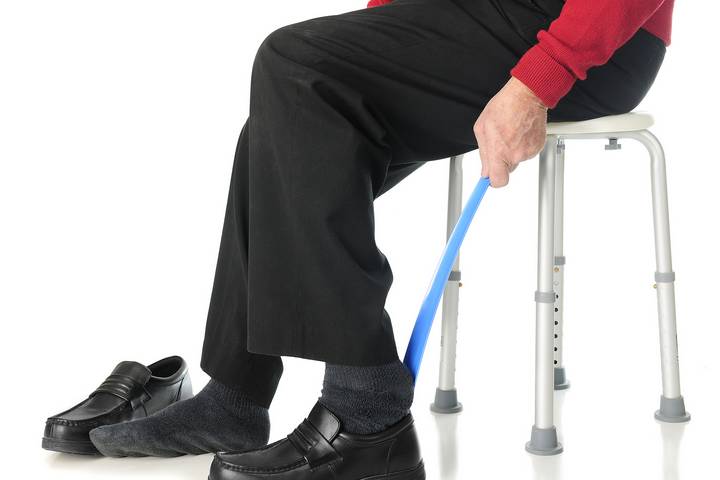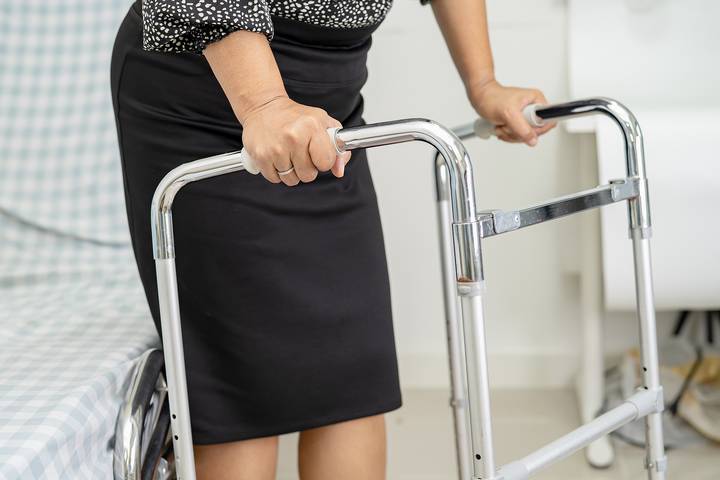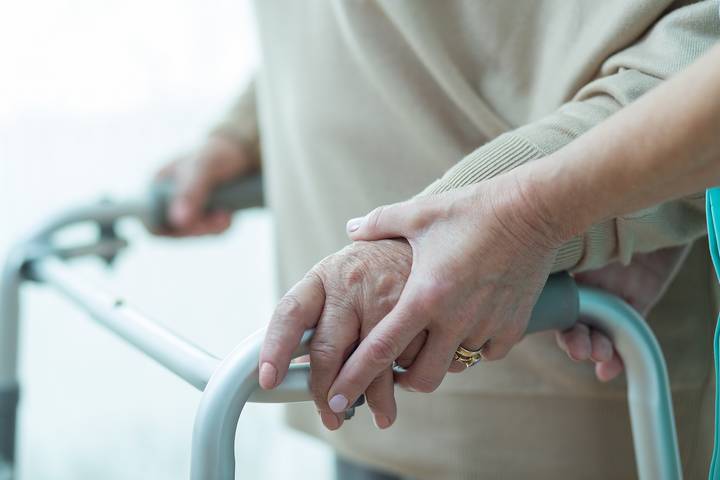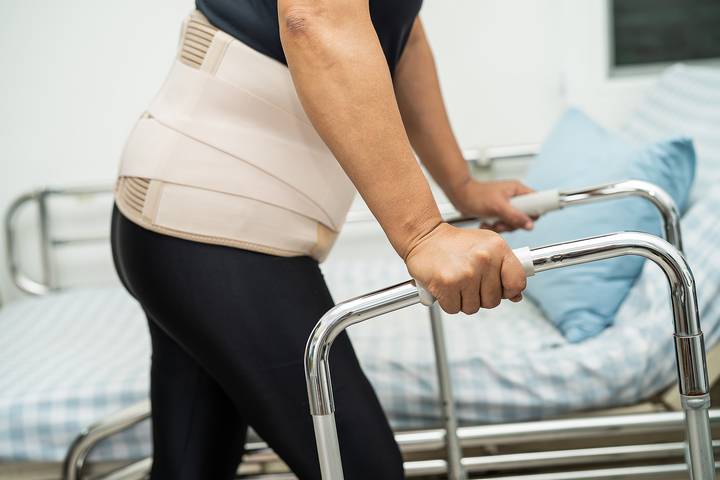How to Walk with a Walker: An Easy Guide
After illness, surgery, injury, or old age, one might need a walker to aid their mobility. A walker is among the many mobility aids and the most popular in different situations. It is recommended by nearly every physical therapist and doctor.
Using a walker might appear easy. However, it’s not because if you don’t use it correctly, you might lengthen your healing period. Therefore, this blog will explain how to walk with a walker, alongside other helpful details.
Fitting in a Walker

Using a walker starts with correctly fitting the equipment in preparation for the actual walk. To fit into a walker, you should first wear the shoes you intend to walk in comfortably to avoid potential
After wearing your shoes, you can now stand straight with the walker in front of you, surrounding you partially. Grab the walker’s handgrips with both hands and elbows slightly bent. The handgrips should be level with the wrist. Adjust them to fit the stated level for maximum comfort if they aren’t.
Walking in a Walker

With the walker in front of you and partially around you, you can now take your first step with your legs firmly held to the floor. This will provide added support. At this time, the injured leg or body part should only bear half of your weight for practice but not the whole to avoid further injury.
To use rolling walkers, you can move the injured leg forward and then support yourself with the walker to move the next leg. There should be at least 6 to 8 inches (15 to 20 cm) of distance between you and the front side of the walker for maximum safety. Repeat the same steps until you cover your desired distance and back.
Sitting from a Walker

After completing your desired distance or between the walks, you must sit down. Just like walking, one should remain careful when standing on a walker to avoid falling or damaging the equipment. To sit on a walker, bring it close to the chair with your body directed at the space. Put your stable leg behind to support the rest of the body.
Slowly slide the injured leg forward with the stable arm on the chair armrest, followed by the other. Then lower your body gently to fit into the chair. The same procedure is used while standing but vice-versa.
Stepping Up with a Walker

One of the most challenging walks with a walker is stepping up or walking on a curb. This refers to a gradually raised surface such as stairs. To walk on a curb, put the walker on the surface with your feet as close as possible in preparation for a step.
The walker should be stable enough, not too flimsy or unsteady, to eliminate fall accidents. When you’re ready, press the walker down with both hands as you move the stable leg, followed by the injured one. You can reverse the stepping down process.
Safety Tips for Walking with a walker

Walking with a walker requires attention to safety to avoid additional injuries. Staying upright while walking is essential to protect your back from strain or injury and keep the walker close to maintain balance.
Wearing flat or low-heeled shoes when using a walker is advisable, as high heels can increase the risk of falls and cause back discomfort. Clear any potential hazards like loose clothing, rugs, rocks, metal objects, or anything else that might cause you to slip or trip on your path. Also, walking on level surfaces and moving steadily is essential, taking one step at a time.
When using the walker, hold onto the handgrips securely for optimal support. Carrying items like a phone or a book in your hands while walking could lead to an insecure grip and potential instability.
How to Make Your Walker Easier to Use

Walkers are generally lifesavers, especially when recovering from an injury, surgery, or in old age. However, some actions must be avoided while using a walker, such as ferrying heavy personal items. That doesn’t mean you should neglect your backpack because the doctor said you should not carry anything on your back. Below are some measures to make your walker more user-friendly.
First, you can go for a walker with a seat to make it easier whenever you need breaks between your walks. A pouch attached to the walker can also help you carry some books, a phone, a water bottle, and other personal items. Trays are suitable for snacks, food, and slightly heavier items. Foldable walkers are the most convenient; they are easy to store and travel with.

